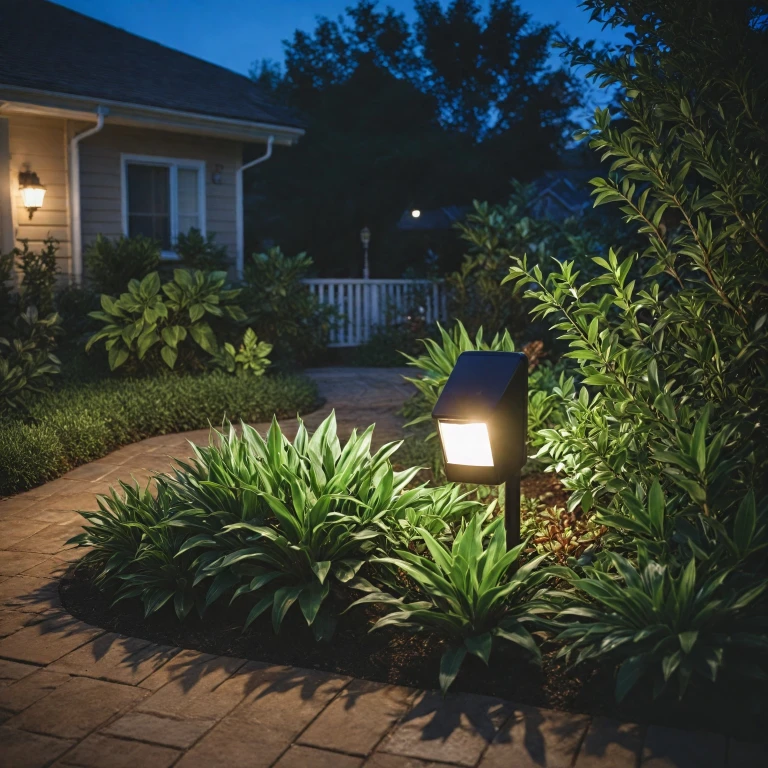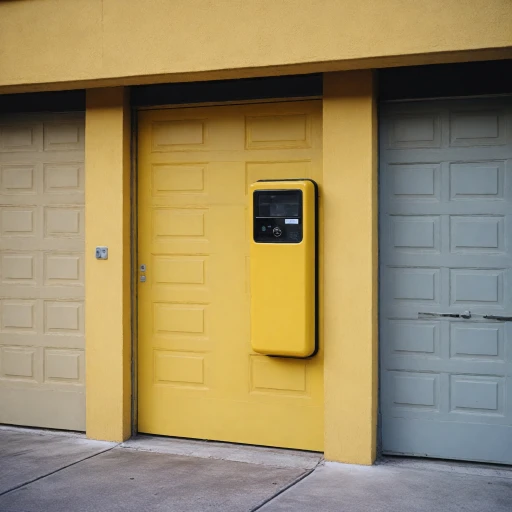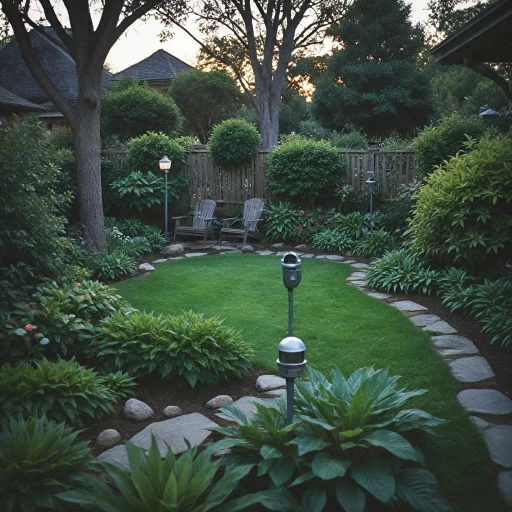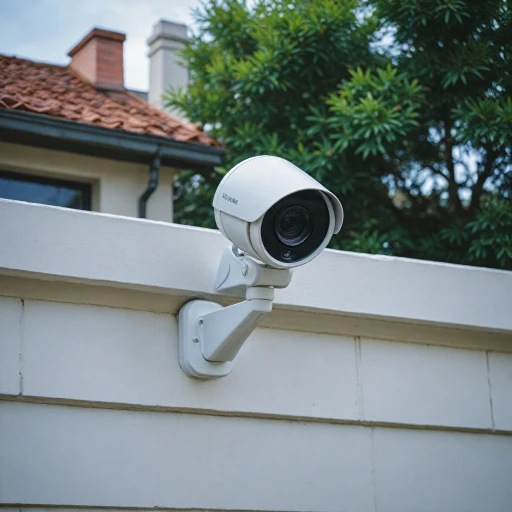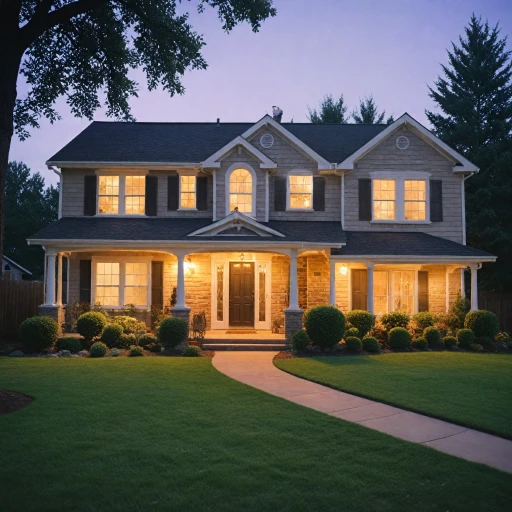Understanding Outdoor Motion Sensor Alarms
Basics of Outdoor Motion Sensor Alarms
Outdoor motion sensor alarms offer a vital component of comprehensive home security systems. Generally, these devices detect movement using Passive Infrared (PIR) technology. This kind of sensor identifies human and animal motion through infrared radiation. Essentially, when a device captures movement within its field of view, it triggers an alert.PIR technology stands out due to its efficiency and accuracy, making it a popular choice for outdoor security. From monitoring driveways to guarding entrances, these sensors embody convenience and reliability.
The Importance of Selecting the Right Sensor
Choosing the appropriate motion sensors aligns closely with the effectiveness of your security system. Key factors to consider include detection range, flexibility, type of power source, and connectivity. Battery-powered and solar-powered options exist, with the latter offering benefits in terms of sustainability.A reliable sensor provides accurate alerts with minimal false alarms, thus offering peace of mind. Knowing these aspects allows you to incorporate a compatible device that enhances your security setup.
For those working to bolster their security measures, discreet outdoor microphones can be a beneficial addition, providing an extra layer of protection alongside motion detectors.
Key Features to Look for in Outdoor Motion Sensor Alarms
Essential Features for Effective Motion Sensor Alarms
When selecting an outdoor motion sensor alarm, identifying key features can make a substantial difference in your home security effectiveness. Here’s what you should consider:- Detection Range: Evaluate the maximum distance a motion detector can perceive movement. Long-range motion sensors are excellent for expansive properties and open areas, ensuring comprehensive coverage.
- Power Source Options: Outdoor motion detectors are available in various configurations, including battery powered and solar powered versions. Solar powered alarms are an eco-friendly choice that can save on energy costs and often feature wireless motion capabilities, simplifying installation. Conversely, battery powered detectors offer flexibility in placement without needing nearby electrical outlets.
- PIR Technology: Passive Infrared (PIR) sensors are crucial for minimising false alarms by detecting heat changes rather than relying on sound or movement alone. This technology helps identify genuine threats while dismissing minor disturbances such as small animals or wind-blown foliage.
- Weather Resistance: Given their outdoor application, these devices must withstand various weather conditions. Look for units with robust weatherproof ratings to ensure longevity and steady performance, even in challenging environments.
- Connectivity: Consider alarms that integrate seamlessly with other security components, offering compatibility with your existing security systems or mobile alerts to keep you updated in real time.
- Customisable Settings: An alarm system with adjustable sensitivity levels can enhance its functionality, allowing homeowners to tailor detection settings to their specific needs and environment.
Installation Tips for Outdoor Motion Sensor Alarms
Optimal Installation Practices for Enhanced Protection
When setting up outdoor motion sensor alarms, carefully planning the installation can significantly enhance their performance and reliability. Here are some essential tips to ensure your motion detection system is working at its best:- Strategic Placement: Position the motion sensors to cover vulnerable areas like walkways, driveways, and entry points. Consider potential blind spots and try to cover these areas with an overlapping field of view. This strategy not only helps protect your property effectively but also reduces false alarms.
- Correct Height for Installation: Install sensors at the recommended height, usually between six to eight feet, to optimize the detection range and motion sensitivity. This height prevents small animals from triggering the sensors while maintaining coverage for human-sized objects.
- Weather Considerations: Outdoor sensors need to withstand diverse weather conditions. Ensure they are weatherproof and install them in locations that minimize exposure to rain and direct sunlight, which can affect the sensor’s performance.
- Utilizing Solar Power: For homes aiming at sustainable energy, consider solar powered options. These not only reduce energy costs but also ensure that your system remains functional even during power outages. Make sure solar panels are positioned to receive ample sunlight throughout the day.
- Avoiding Interference: Keep sensors away from potential interference like trees or other objects that sway in the wind, as this can trigger unnecessary alarms. Regular maintenance to clear any obstructions is advisable.
- Testing and Calibration: After installation, test the motion detectors to ensure they cover the desired areas and adjust settings for motion sensitivity if needed. Checking the wireless connection in a wireless driveway alarm system is crucial for consistent communication with the main security system.
- Integration with Existing Systems: Enhance security by integrating your outdoor detectors with a comprehensive security system. This integration can include alarms, cameras, and smart home devices, maximizing the effectiveness of your home security as indicated in our earlier discussions on comprehensive security solutions.
Integrating Motion Sensor Alarms with Home Security Systems
Seamless Integration with Your Current Setup
Integrating outdoor motion sensor alarms with your existing home security system can significantly enhance your property's protection. These sensors act as a first line of defense, detecting any movement within their range and immediately triggering an alarm. To achieve this seamless connection, consider installing wireless motion sensors that easily sync with your security system, eliminating the need for extensive wiring.Choosing the Right Technology for Your Needs
Today's market offers various types of motion sensors, such as PIR (passive infrared) sensors, which are especially reliable in reducing false alarms. Options also include solar powered and battery powered sensors, the latter offering flexibility by being easier to install without needing access to an electrical outlet. When selecting a detector, consider your property's layout and the coverage range required. For expansive areas like a driveway or backyard, long range sensors will ensure maximum coverage.Cohesion with Additional Security Elements
Enhancing your home's protection often involves combining multiple security elements for comprehensive coverage. In tandem with motion detectors, installing a wireless driveway alarm can further help protect access points. Moreover, adding a beam alarm at entryways complements your system by offering another layer of alert.Considerations for Future Scalability
Your security system should be adaptable to future needs. Opt for systems where you can easily add cart additional components, whether it's more motion detectors or enhanced alarm systems. This flexibility ensures that as your home security demands grow, your setup can evolve efficiently. In conclusion, integrating motion sensors into your home security infrastructure involves strategic choices regarding the technology and configuration. Evaluate the range and detection capabilities alongside compatibility with existing systems for a robust defense against unauthorized intrusions.Common Challenges and Troubleshooting Tips
Addressing Common Setup Issues
When you've set up your outdoor motion sensor alarm, it can be frustrating to encounter issues. To assist in smoothly navigating these challenges, here are some common problems and their solutions.
One frequent issue is false alarms. They can be caused by weather conditions, pets, or even moving tree branches. To mitigate these, ensure the sensors are placed in strategic areas where the field of detection won't be affected by frequent non-threatening motions. The use of PIR (Passive Infrared) technology can help reduce these false alarms by focusing only on human heat signatures.
Maximizing the Detection Range
To optimize detection range, make sure to aim your motion detectors correctly. The detectors should have an unobstructed view in order to provide a robust range for both short and long range motion detection. Consider installing wireless motion or beam alarms in crucial points like the driveway or backyard for extended coverage.
Maintaining Battery and Power Reliability
Another challenge is ensuring consistent power to the sensors, especially if they are battery powered or solar powered. Regularly check the battery levels and keep them charged, particularly for wireless driveway alarms. For solar powered security systems, place them in locations that receive ample sunlight to maintain power.
Troubleshooting Sensor Placement and Connectivity
Sometimes, issues stem from improper sensor placement or connectivity problems. Wireless motion sensors may suffer from connectivity issues if there are too many obstacles or if they are placed at the edges of their range. Re-position them for better signal reception or use range extenders to strengthen the connection.
Evaluating the Cost and Value of Outdoor Motion Sensor Alarms
Assessing the Price Point and Advantages of Outdoor Motion Detecting Alarms
Evaluating the cost and value of outdoor motion sensor alarms is essential in ensuring you make a worthy investment in home security. Prices can vary widely depending on the type of motion sensors you choose—be it wireless, solar powered, or long range systems. Several factors contribute to the pricing:- Type of Alarm System: Wireless motion detectors and beam alarms typically have different price points than traditional wired systems. Wireless systems often provide greater flexibility in installation and less invasive setup.
- Power Characteristics: Solar powered and battery powered options are available. While solar models can save on long-term energy costs, they might require proper positioning for optimal performance. Battery powered options, on the other hand, offer portability and easy placement.
- Technology and Features: Advanced features such as PIR sensors (Passive Infrared Sensors) that minimize false alarms, night vision capability, and integrated wireless driveway systems can add to the overall cost but provide significant benefits in terms of security and peace of mind.
- Range and Coverage: Systems offering long range detection are typically higher in cost. These are particularly beneficial for properties with extensive perimeters that need effective surveillance.
